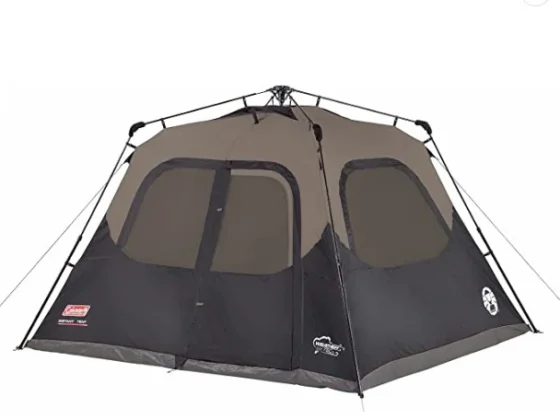As the world becomes increasingly interconnected, the allure of exploring the great outdoors has never been stronger. Whether you’re planning a road trip through the scenic backroads of Cebu or embarking on a rugged adventure in the wilderness, mastering the art of map reading and orienteering is essential for a safe and fulfilling journey.
The Importance of Map Reading and Orienteering Skills
In the age of GPS and digital navigation, it’s easy to become overly reliant on technology. However, when venturing into the backcountry, where cell phone coverage may be limited or nonexistent, having a solid understanding of traditional map reading and orienteering skills can mean the difference between a successful outing and a potentially dangerous situation. These skills not only enhance your ability to navigate unfamiliar terrain but also foster a deeper connection with the natural world around you.
Understanding Topographic Maps
Topographic maps are the foundation of backcountry navigation. They provide detailed information about the landscape, including elevation changes, terrain features, and the location of natural and man-made landmarks. Learning how to read and interpret these maps is a crucial first step in mastering orienteering.
- Contour Lines: Understand how contour lines represent changes in elevation and the shape of the land.
- Scale and Distance: Familiarize yourself with the map’s scale to accurately measure distances and plan your route.
- Terrain Features: Identify different terrain features, such as peaks, valleys, and waterways, and how they are depicted on the map.
Essential Tools for Map Reading and Orienteering
While technology can be a valuable asset, there are some essential tools that every backcountry explorer should have in their arsenal:
- Compass: A reliable compass is a must-have for navigating with a map.
- Altimeter: An altimeter can provide valuable information about your elevation and help you track your progress.
- GPS Device: A GPS device can serve as a backup to your map and compass, but should not be solely relied upon.
- Headlamp or Flashlight: Ensure you have a reliable light source for navigating in low-light conditions.
Basic Orienteering Techniques
Mastering the art of orienteering involves a combination of map reading, compass use, and environmental awareness. Here are some essential techniques to help you navigate the backcountry:
- Orienting the Map: Align your map with the surrounding landscape to understand your position and the direction you’re facing.
- Triangulation: Use identifiable landmarks to pinpoint your location on the map.
- Pacing: Estimate distances by counting your steps to supplement the information on the map.
- Route Planning: Carefully plan your route, taking into account terrain, obstacles, and potential hazards.
Navigating with a Compass
The compass is a crucial tool for backcountry navigation, allowing you to determine your direction and maintain a consistent heading. Learn how to use a compass in conjunction with your topographic map to ensure accurate navigation.
- Orienting the Compass: Align the compass needle with the map’s north-south axis.
- Taking a Bearing: Use the compass to determine the direction you need to travel.
- Adjusting for Declination: Understand how to account for the difference between true north and magnetic north.
Identifying Landmarks and Natural Features
In addition to using maps and compasses, developing an eye for identifying natural landmarks and terrain features can greatly enhance your navigation skills. Learn to recognize distinctive peaks, ridges, rivers, and other elements that can help you pinpoint your location and plan your route.
Road Safety Tips for Road Trip Travel
When navigating the roads of Cebu or any other area, it’s essential to prioritize road safety. Keep the following tips in mind:
- Maintain Situational Awareness: Stay alert to your surroundings and potential hazards, such as sharp turns, uneven surfaces, and wildlife.
- Adjust Your Speed: Drive at a speed that allows you to maintain control of your vehicle and react to unexpected obstacles.
- Respect Local Traffic Laws: Familiarize yourself with the local traffic regulations and obey all signs and signals.
Recommended Outdoor Stores for Map and Navigation Equipment
To ensure you’re well-equipped for your backcountry adventures, consider visiting the following outdoor stores in the Philippines:
| Store Name | Location | Specialty |
|---|---|---|
| Outdoor Exchange | Cebu City | Topographic maps, compasses, GPS devices |
| Mountain Gear | Davao City | Hiking and camping equipment, including navigation tools |
| Camping Gear | Manila | Online outdoor equipment shop with a wide selection of outdoor gear. |
| Trails and Paths | Baguio City | Focused on hiking and trekking supplies, including orienteering essentials |
Conclusion
Mastering map reading and orienteering skills is an essential part of any backcountry adventure. By understanding topographic maps, utilizing the right tools, and applying basic navigation techniques, you can confidently explore the great outdoors, whether you’re planning a road trip through Cebu or venturing into the wilderness. Remember, the journey is as much about the experience as the destination, and these skills will help you make the most of every step along the way.
To enhance your backcountry navigation skills, consider signing up for an orienteering workshop or outdoor skills course in your local area. These hands-on learning opportunities can provide valuable insights and practical experience to help you navigate the great outdoors with confidence.



